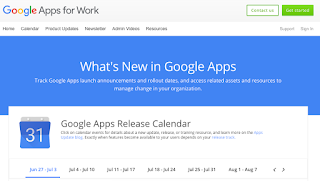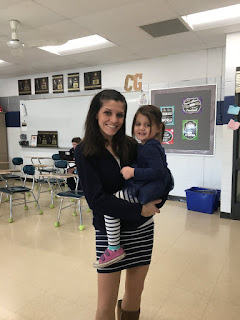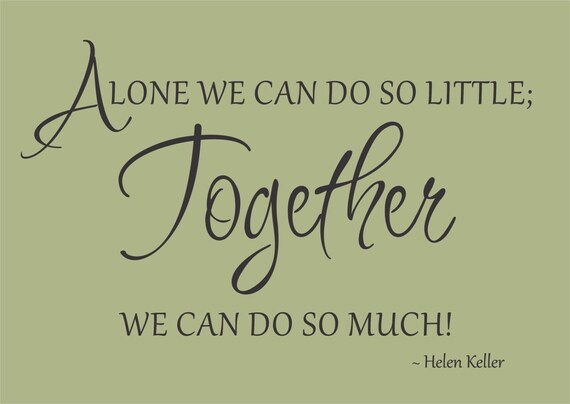As an instructional coach, one of my goals is to show and express gratitude to my colleagues. Working in a school and with hundreds of students can keep us busy and sometimes focused on our specific disciplines or duties. Having time to stop and witness what is happening in other departments or ends of the school is nearly impossible. Still, when the opportunity arises to express gratitude, the significance of that interaction loudly echoes.
In my role, I am fortunate enough to have time to step outside of the speech communication world for a few minutes. As I work with other teachers throughout the school, I have witnessed incredible teaching and learned more about my personal finance than I could ever have imagined! I have participated in crime scene investigations, seen station rotation in a mathematics classroom, and gone on una Búsqueda de tesoros (or a scavenger hunt) in Español. I am blessed beyond measure and am inspired by my colleagues every day. Witnessing so many actions has reminded me that I need to continue to prioritize gratitude as that feeling will promote collaboration, increase people's motivation to give to others, and will make coming to school even better.
How do we show gratitude to our colleagues when there isn't time to breathe on some days? The answer is simple.
Post a celebratory comment on social media.
Most schools have a designated hashtag and encourage community members to use it to perpetuate noteworthy ideas, messages, and actions. To spread that attitude of gratitude - use it! Post and share inspiring lessons, students, and acts of service. When we demonstrate to our students that social media can be used to build others up, we model positive digital citizenship and encourage them to do the same. Hashtags links are wonderful ways to track awesome occurrences and people and can be used to celebrate a community even further. Web applications such as Visible Tweets and Twitterfall are great for displaying live tweets during meetings, classes, and even social gatherings. #Thanks
Share food.
Food is the way to nearly anyone's heart. Having food at a meeting automatically improves people's comfort levels but also encourages them to talk. Anytime I lead a professional development session, I bake my mother's famous white chocolate chip, chocolate chunk cookies. They have been called hockey pucks, hell cookies, and pieces of heaven all in the same sentence. My colleagues have come to anticipate their arrival at school, and while certainly scolded me for bringing them two days before Thanksgiving, I know they lifted spirits; They encouraged people to take a moment to stop and chat. There is power in food - especially cookies baked with love. Whether it is baking cookies, sharing a formal meeting, or merely offering another person a few M&Ms sitting in a jar on a desk, sharing food shows gratitude and is a culturally-rooted tradition that invokes feelings of joy and appreciation.
Compliment often and sincerely.
Sincere and specific compliments can turn a person's day around. Even this week, I was in my head, and a colleague helped me work through my thoughts by reminding me of my strengths. She stopped her work because I needed support and provided specific examples of actions I had done and the ways I had contributed to the school. I could not have been more appreciative at that moment and grateful for her kind words. Our words matter. Using them to support and encourage others to start a chain reaction. Because of my colleague, I was able to reframe my mindset, and I worked harder to make the days of others even better. Compliments may seem insignificant, but they can be everything to a person having a tough day. Even on the best days, a specific and direct compliment that comes from the heart is a beautiful way to spread joy.
Write a quick note.
Post-its are plentiful in the education world. Walk into an office, and a pack will be accessible in an arms reach. As such, taking the time to jot down a quick thought or leave a message is a wonderful surprise for the recipient and then is often hung or displayed in some way on that person's desk. Serving as a permanent reminder that someone is grateful is a small emotional boost and encourages that person to continue to be spread greatness in the world. While sharing compliments are powerful, notes last longer and are visible. After working with a colleague one-on-one or if I walk past a person's room and I see a lively lesson, I try to write a quick note to express appreciation and let them know that they are seen. The act of validating others is invaluable to perpetuating positivity, and the impact of walking to someone's desk to drop off a quick note not only boosts your step count but also creates a ripple of cheerfulness.
Allow yourself to stop for a moment to appreciate the greatness around you.
Slowing down and being still are incredibly difficult for me. As Newton's first law of motion states, I will not stop unless an external force (typically my family) makes me, but I have learned in the last two years that pausing to reflect and appreciate others is worthy of our time. Being present with others in conversation, whether it is school-related or not, is the most important action that we can do each day. What is in front of me deserves all of me. I am grateful for the people that have been placed in my life, and the best way I can express this notion is to make the moments I have with the people I encounter my most important priority at that time. Not only does this action end up saving time in the long run (As one can "create time" by doing something right the first time), but it also validates that person beyond measure, and really, we all simply want to be seen and heard.
I see you. I hear you.
In the toughest times, personally or professionally, it is easy to brush aside or put off showing thankfulness, but I have learned that it is in those times that expressing appreciation must be a priority. Having an attitude rooted in gratitude improves any mindset and can brighten the hardest days. I am grateful for my school family, my colleagues across my school district, and my personal learning network who continues to motivate me. Thank you for reminding me to learn more, share frequently, and give my best self in every moment that I am fortunate enough to say that I am a teacher.









































